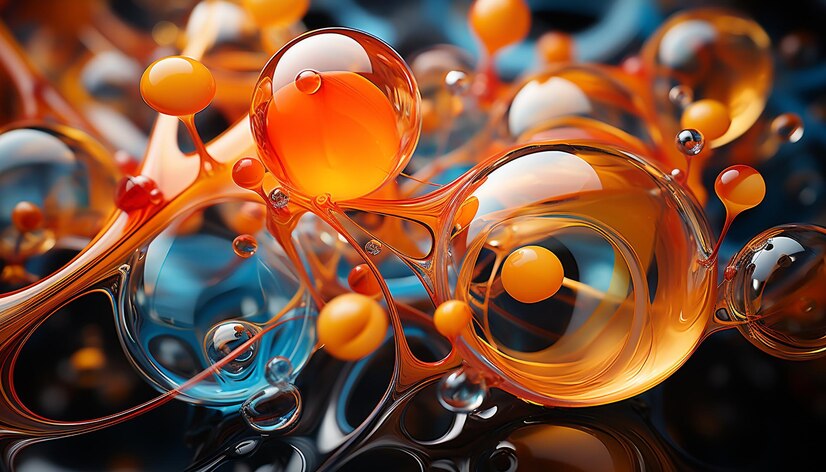Right Now
Polylactic Acid: A
Sustainable Alternative to Traditional Plastics
What
is Polylactic Acid?
Polylactic acid, commonly referred to as PLA, is a thermoplastic aliphatic
polyester derived from renewable plant sources such as corn starch, cassava
roots, sugarcane, or sugar beets. The raw materials are gathered from these
crop byproducts and undergo fermentation and polymerization processes to
produce PLA in pellet or filament form.
How is PLA Made?
To manufacture PLA, the harvested plant matter like corn is refined to extract
its starch content. This starch is then broken down into simple sugars like
glucose through a process called hydrolysis. Through fermentation, the sugars
are converted to lactic acid by microorganisms like bacteria. The lactic acid
molecules are then linked together through a process called ring-opening
polymerization into long chains, forming the poly-lactic acid polymer.
Additional processes may be applied to produce Polylactic
Acid in various grades optimized for different applications.
Biodegradability and Sustainability
One of the major advantages of PLA is that it is biodegradable. In commercial
composting facilities, PLA will degrade within 3 to 6 months as the polymer
chains break down when exposed to microorganisms. It can also degrade in
natural environments like soil and marine water within a similar timeframe.
Since PLA is produced from renewable plant resources rather than petroleum, its
production has a lower carbon footprint than traditional plastics. Cultivating
crops for PLA production also sequesters carbon from the atmosphere. Overall,
PLA offers a more sustainable alternative to oil-based plastics.
Applications of Polylactic Acid
Thanks to its biodegradability and renewable sourcing, PLA has a variety
applications across several industries:
- Packaging: PLA is used extensively
in food packaging like disposable plates and cups, as well as bags and wrap.
Its barrier properties make it suitable for perishable items while also being
compostable.
- 3D Printing Filament: PLA is one
of the most popular polymers used for 3D printing as it produces strong yet
flexible prints. spool. It has high compatibility with desktop FDM printers.
- Textiles: PLA fiber offers a
sustainable alternative to conventional textile fibers in clothing, upholstery
and more. Garments made of PLA fabrics can biodegrade at the end of their use
cycle.
- Medical Devices: As a
biocompatible material, PLA is used in resorbable medical implants, sutures and
other single-use equipment. It safely dissolves in the body after its role is
served.
- Consumer Goods: Items like cups,
cutlery, straws and more are now being produced from PLA to reduce waste. Major
brands are switching to PLA to meet sustainability goals.
Properties and Processing of Polylactic
Acid
PLA has properties suitable for the applications noted above due to its balance
of strength, flexibility and processing viability. Some key properties of PLA
include:
- Tensile Strength: With a tensile
strength of 57-59 MPa, PLA is as strong as popular petroleum-based polymers
like HDPE.
- Stiffness: PLA has a modulus of
elasticity of 3.5 GPa, making it quite a rigid material suitable for molded
items, 3D prints etc.
- Thermal Properties: PLA softens at
temperatures upwards of 160°C and has a melting point around 145-180°C
depending on composition.
- Optical Properties: Being
partially crystalline, PLA has clarity properties useful for light packaging.
It may become opaque upon processing depending on method.
- Processing: PLA can be easily
extruded, molded, thermoformed and 3D printed using common polymer fabrication
techniques.
- Biodegradability: In commercial composting,
PLA breaks down within 6 months without toxic residues.
Drawbacks of Polylactic Acid
While PLA presents an eco-friendly alternative, it also has limitations such
as:
- Higher Cost: Production costs of PLA are currently higher than
petroleum-based plastics due to agricultural feedstock and multi-step
synthesis.
- Sensitivity to Heat: PLA has a
relatively low glass transition temperature and begins deforming above 60°C. It
requires careful processing and use.
- Lower Impact Strength: PLA is more
brittle than common plastics and more prone to breaking on impact at room
temperature.
- Slow Degradation: While
biodegradable, degradation of PLA may be slow under some environmental
conditions in soil or oceans.
- Limited Resource Availability: Production
is currently limited by availability of non-GMO corn and sugar sources for
fermentation.
Overcoming Constraints and the Future of
Polylactic Acid
Research is ongoing to enhance the properties and production viability of PLA.
Methods include developing novel microbial strains for more efficient lactic
acid synthesis, modifying PLA composition to enhance toughness and heat
resistance, and exploring new feedstocks beyond corn. With advancements, PLA
promises to become a higher performance and lower cost bioplastic alternative
that can effectively compete with oil-based plastics in coming years while
being more sustainable. Wider adoption depends on continued scale-up of
infrastructure for supporting a bio-economy. Overall, PLA shows exciting
potential as a renewable and earth-friendly plastic.
Get
more insights:
Polylactic Acid
For
More Insights Discover the Report In language that Resonates with you
About Author:
Money Singh is a seasoned content writer with over
four years of experience in the market research sector. Her expertise spans
various industries, including food and beverages, biotechnology, chemical and
materials, defense and aerospace, consumer goods, etc. (https://www.linkedin.com/in/money-singh-590844163)
More Posts

Report This Post
Please complete the following requested information to flag this post and report abuse, or offensive content. Your report will be reviewed within 24 hours. We will take appropriate action as described in Findit terms of use.




















